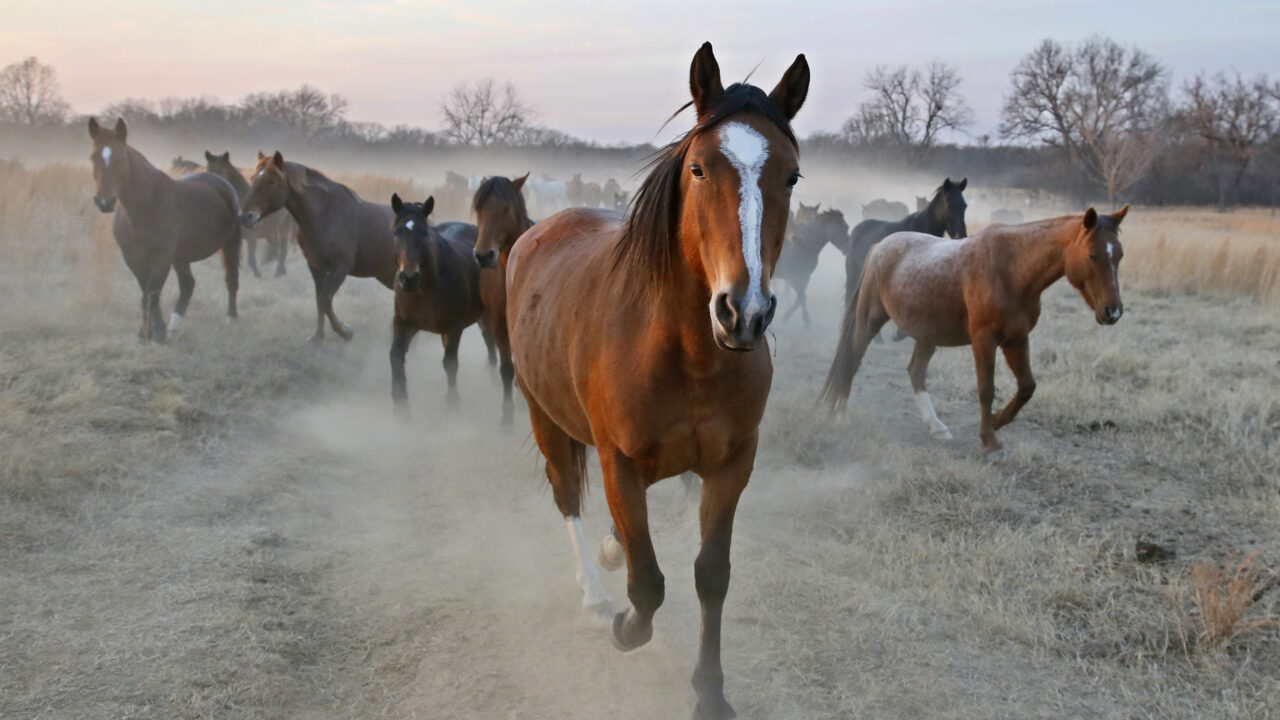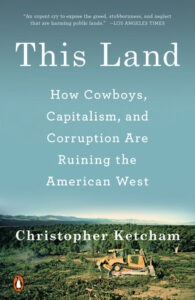Behold and Protect the Wild Native American Horse
Why is the cattle industry so afraid of recent findings in equine paleohistory? The caballine populations of ancient North America evolved five million years ago. Photo by Sue Ogrocki / AP
The caballine populations of ancient North America evolved five million years ago. Photo by Sue Ogrocki / AP
Consider this wildlife paleohistory: a species that evolved in North America disappears from the continent thousands of years ago, then recolonizes the landscape after several thousand more years have passed. In the interval, the species’ evolutionary track is affected in minor ways by the environment where it survived outside North America — but not enough to fundamentally alter its DNA, behavior or physical appearance.
Such is the case, for example, of the native American cat, Puma concolor, which is thought to have disappeared from North America during the megafauna extinction event of the late Pleistocene, roughly 12,000 years ago, only to return via the Panamanian isthmus when surviving populations in South America recolonized their old stomping grounds.
No wildlife biologist today will tell you that pumas that were absent from North America for several thousand years are a different species because of that absence. The same species lived on in the jungles and pampas and deserts of South America before making the journey northward to recover its original home turf.
In the paleohistory of the horse we find a nearly analogous story, one supported by a new and growing body of science. Ancient horses related to the modern domestic horse first appeared in North America millions of years ago, and from there spread to Eurasia over the Bering land bridge at least 800,000 years ago. The American populations were mostly wiped out in the Pleistocene extinction, but hung on in northern Canada until at least 6,000 years ago. Descendants of those Eurasian migrants recolonized our continent, albeit in domesticated form via Spanish conquest.
Some of those animals escaped their imperial handlers and reverted to the behaviors of their North American ancestors, ranging across grasslands in tight-knit herds, primarily in the arid country of the western U.S.
Some of those animals escaped their imperial handlers and reverted to the behaviors of their North American ancestors, ranging across grasslands in tight-knit herds, primarily in the arid country of the western U.S. The federal agency tasked with overseeing the welfare of these herds of wild horses, the Bureau of Land Management, declares them, by turns, “non-native,” “alien,” and “invasive”— and this, as it happens, is one of the worst examples today in federal wildlife management of willfully ignoring science in pursuit of political ends.
The fundamental definition of a species that biologists prefer is the so-called “biological species” concept. This holds that individuals and populations that are able to interbreed and produce fertile, viable offspring are members of the same species. Whether the modern domestic horse could have interbred with its Pleistocene forebears cannot be directly determined.
Without a scintilla of evidence, however, the BLM asserts that they could not. Yet biologists and paleontologists agree that the horse is a member of the same lineage as the particular group of Pleistocene horses from which they descend. These are the caballine horses, which evolved 5 million years ago in North America, and persist until today.
The science is settled: as a recent major study in Nature showed, wild horses are caballines, the same as all other living horses. All ultimately descend from the same source, the caballine populations of ancient North America.
The Bureau of Land Management, with its claims the wild horse is not meant to be among us in North America, is trafficking in what are either bureaucratic delusions or outright lies. I think the latter is the case. What’s the BLM’s motivation for lying to the American people?

As I document in my 2019 book “This Land: How Cowboys, Capitalism, and Corruption are Ruining the American West,” the BLM has long been a captive creature of the livestock industry, which regards wild horses as competitors with cows for forage on public rangelands. I believe the BLM is motivated to keep the wild horse in place as an alien and invasive species so that it can continue to do the bidding of its masters, the powerful cohort of public lands ranchers.
What’s the way forward? First, we need a public education campaign about the true paleohistory of horses in North America. Second, we need a campaign of citizens organized to pressure the BLM to abandon its anti-science position and its obnoxious falsification of paleohistory. The BLM needs to recognize the reality that wild horses are true North Americans. They deserve to be celebrated as such, and to be protected accordingly.
Your support matters…Independent journalism is under threat and overshadowed by heavily funded mainstream media.
You can help level the playing field. Become a member.
Your tax-deductible contribution keeps us digging beneath the headlines to give you thought-provoking, investigative reporting and analysis that unearths what's really happening- without compromise.
Give today to support our courageous, independent journalists.
You need to be a supporter to comment.
There are currently no responses to this article.
Be the first to respond.